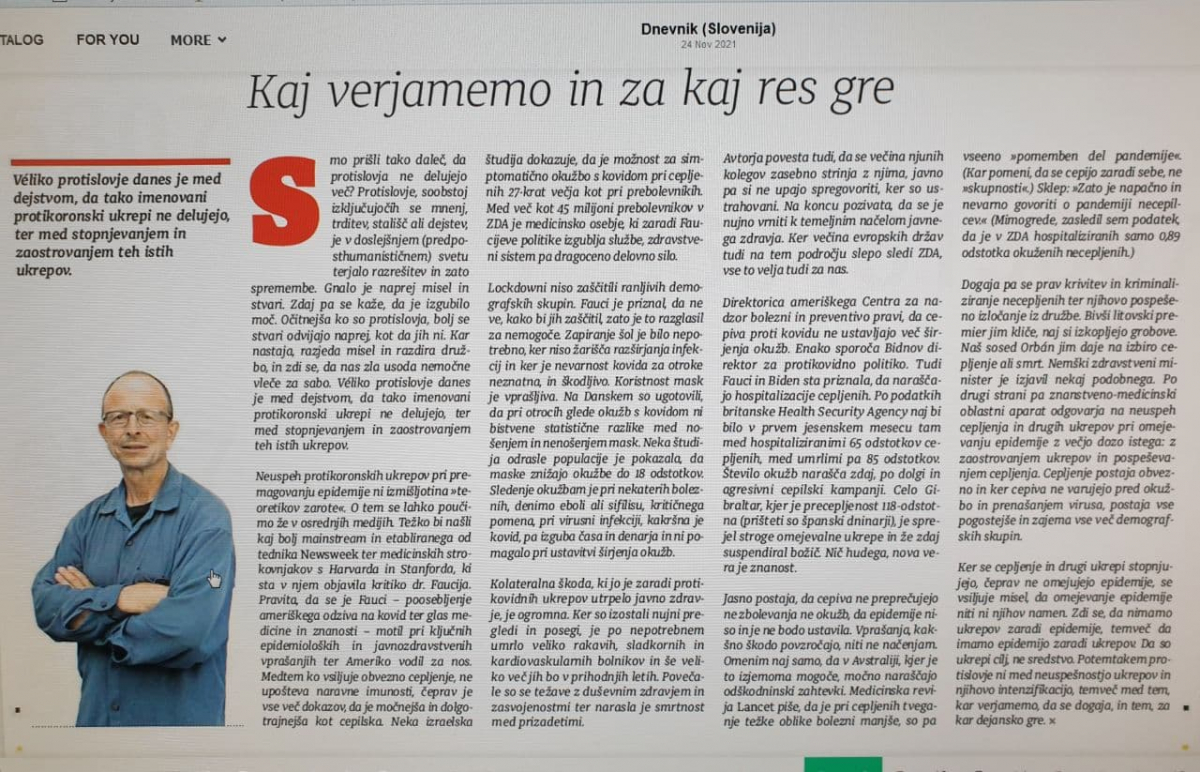
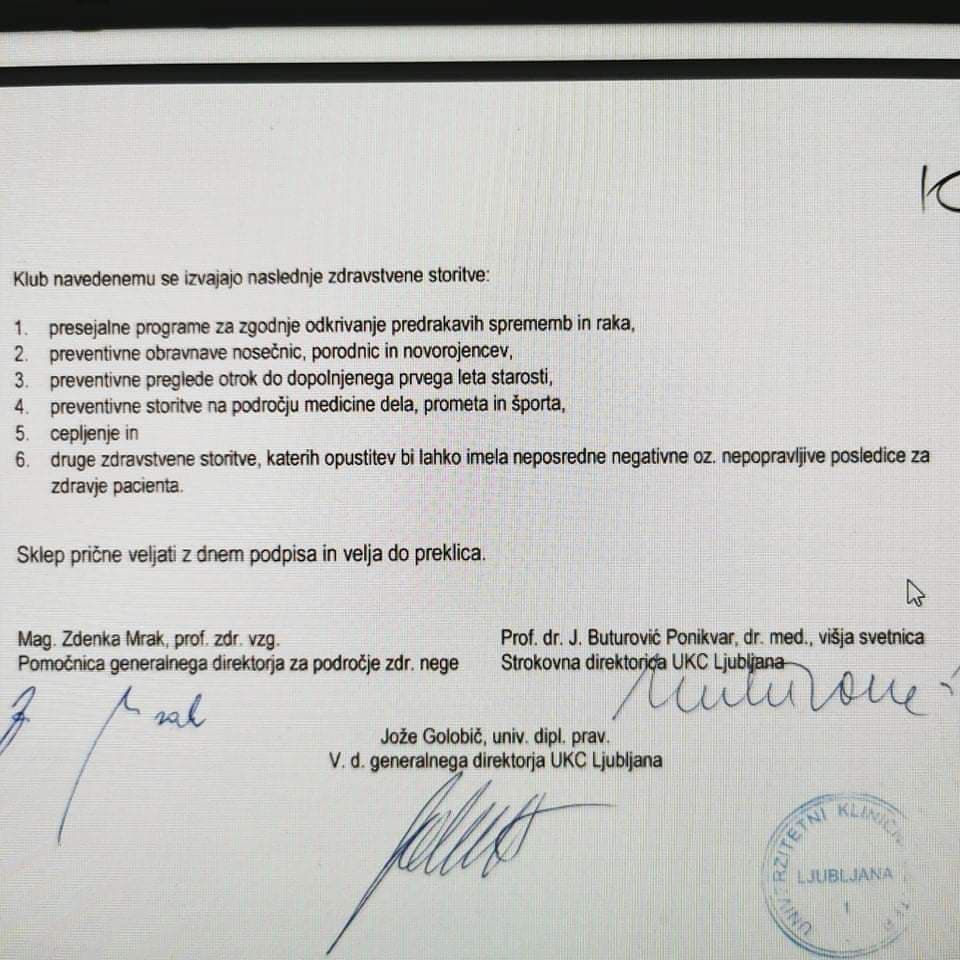
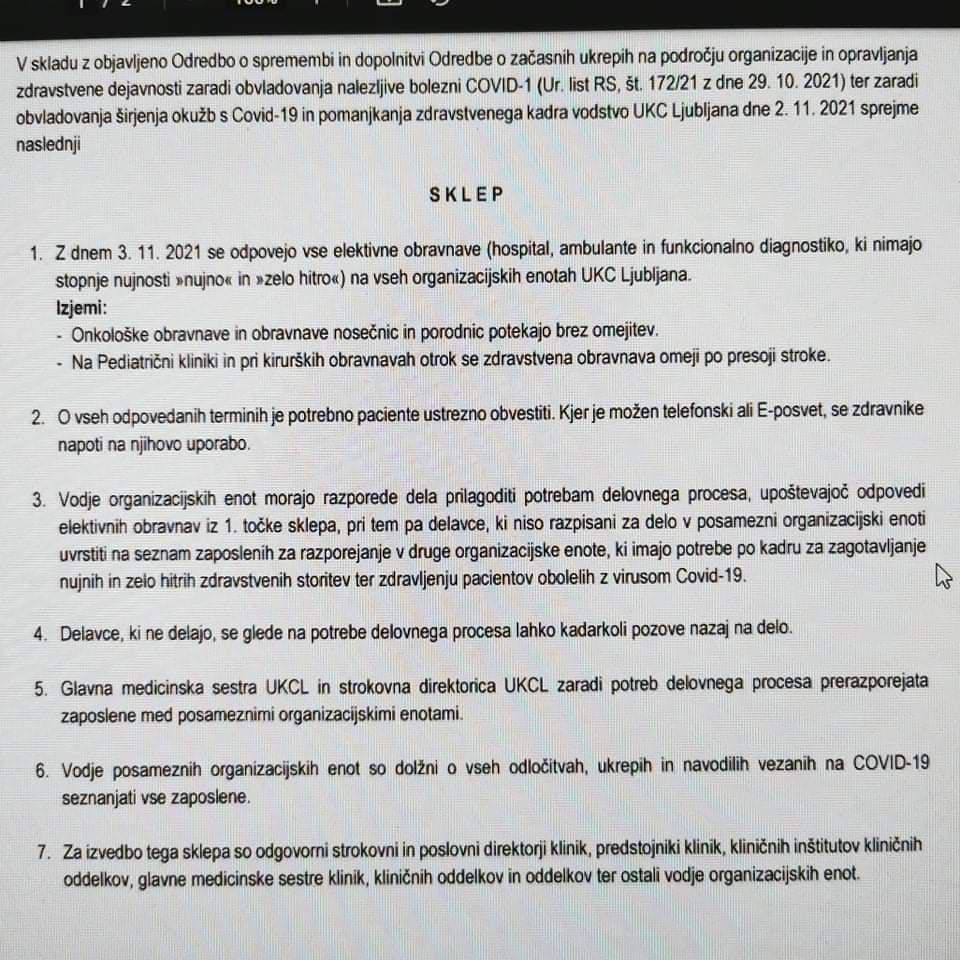
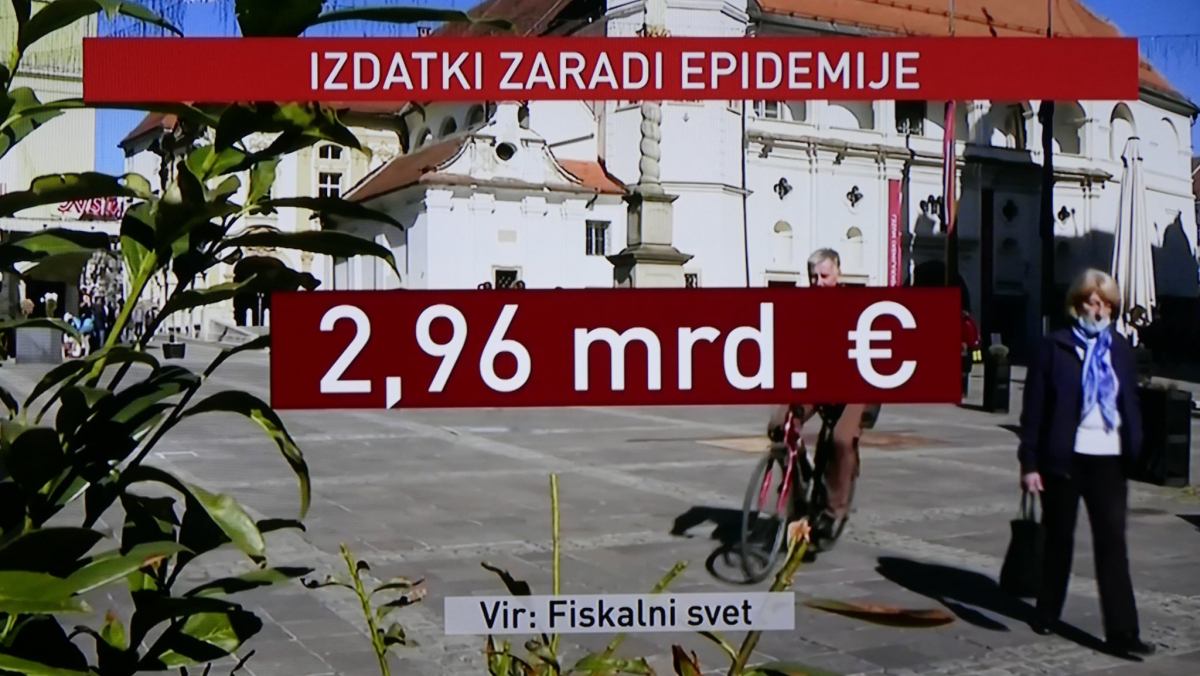
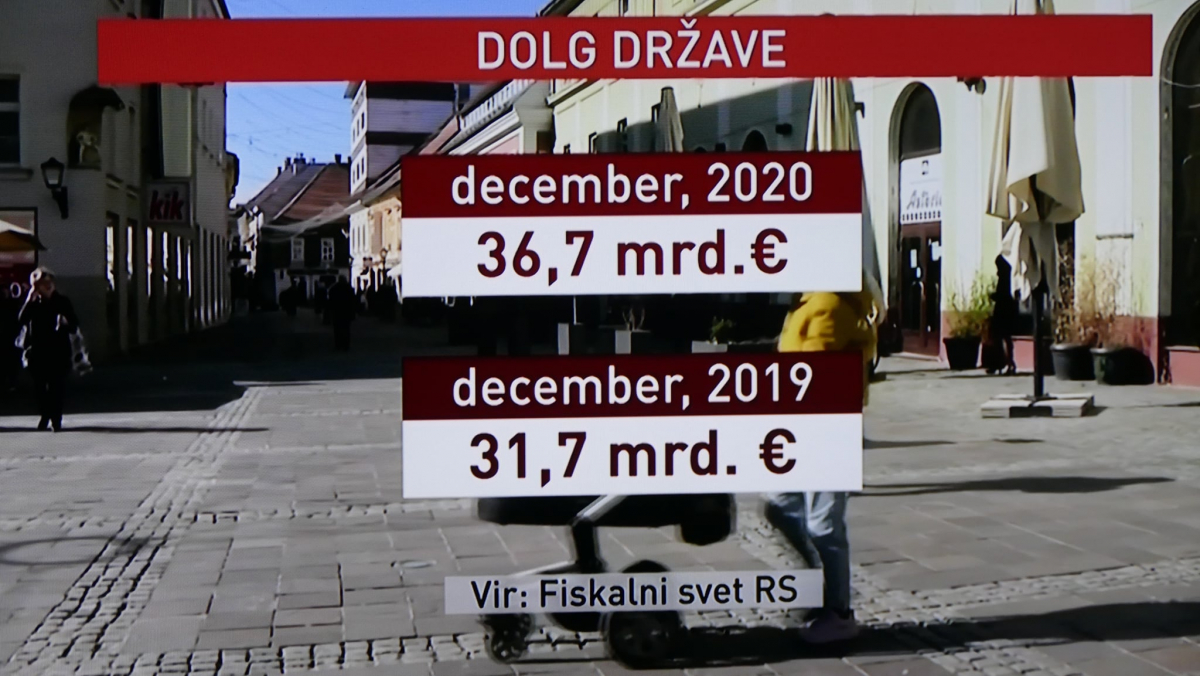
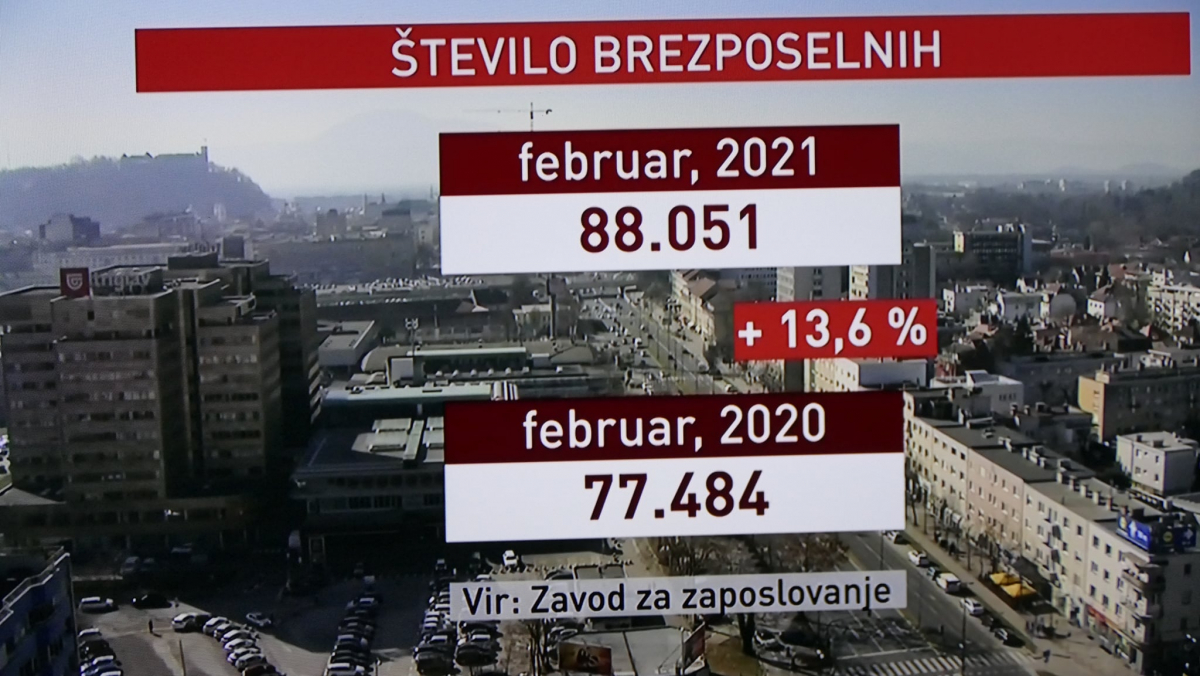
There IS another way to beat coronavirus, PM - and here it is: Oxford experts DR TOM JEFFERSON and PROFESSOR CARL HENEGHAN reveal the blueprint they have handed to Boris Johnson
You could be forgiven for thinking that the situation we now face is as clear as it possibly could be – and that it is becoming more dangerous by the day. The virus, we are told, is out of control, that Britain is heading for 3,000 to 4,000 deaths a day by Christmas, and that our hospitals are on the edge of catastrophe.
Yet we believe the situation is not at all clear. There are only two things about which we can be certain: first, that lockdowns do not work in the long term. They kick the can down the road. The idea that a month of economic hardship will permit some sort of 'reset', allowing us a brighter future, is a myth. What, when it ends, do we think will happen? Meanwhile, ever-increasing restrictions will destroy lives and livelihoods.
The second certainty is this: that we need to find a way out of the mess that does no more damage than the virus itself. We presented just such a plan to the Prime Minister himself more than a month ago. It will be put before him once again this weekend. We urge him to pay attention and embrace it.
Our strategy would be to tackle the four key failings. We must address the problems in the Government's mass testing programme; we must tackle the blight of confused and contradictory statistics; we must make real efforts to protect and isolate those who are vulnerable; and we must inform the public about the true and quantifiable costs of lockdown (as if they needed telling).
If we do these things, there is real hope that we can learn to live with the virus. That, after all, was supposed to be the plan.
Huge resources have been poured into the roll-out of mass swab tests provided by the NHS. In theory, they should tell us who is infectious, how far the virus is spreading and how fast. In practice, the regime is somewhat aimless and indiscriminate. It has wasted precious resources.
In part, this is because the results identify large numbers of 'positive' cases among people who are not infectious. In some cases, the swab tests are picking up levels of Covid-19 which are so very low that the patient will not pass the virus on.
This makes a 'positive' reading difficult to interpret. In other cases, administrative errors creep in, as is only too likely given the volume of testing. But the bigger problem is this: the tests give us a simple yes/no answer but fail to identify those who pose a genuine risk.
The results make no distinction between an eight-year-old who is less likely to transmit the virus and a 75-year-old who could prove highly infectious and is in personal danger, especially if suffering multiple health problems.
That is why we must stop relying on yes/no test results alone and start looking at people's age and symptoms, too.
We are calling for a national programme of testing quality control to ensure that results are accurate, precise and consistent.
We have searched in vain for evidence that many of the tests in use have been independently and centrally validated. We should also be given data showing how sensitive the laboratory processes have been, as this will tell us how much virus was actually present in the swabs
If your levels of virus are low, then the chances of passing it on are also low. Then we must target the tests at those who truly need them. Care workers, for example, rather than primary school pupils. The contact tracers will perform better if they have fewer, more important, cases to chase.
We understand that the Prime Minister has pinned his hopes on rapid turnaround tests that could give an answer within an hour. Where is the scientific evidence to show that they work? What, we wonder, would be the cost?
Shoddy data is a second key failing. The statistics are not transparent. A confusion of different methods is used and at times they are politicised.
We are told as a matter of certain fact that the whole of the NHS is in danger of being overwhelmed. Our data suggest that there have indeed been hotspots – in Liverpool, for example – but that the situation is stabilising even in some of these places.
In the past 48 hours, we have been told there are 96,000 new infections a day. But we have also been told by respectable analysts that there are 36,000 cases and 55,000 cases a day. Take your pick. The track record of predictions – once checked against the facts – is abysmal.
Covid projections and illustrations are made by the Government and its advisers on a regular basis, yet by the time we could check they are correct, they've already been lost amid the murky haze of yet more tables, charts and projections. It is hard enough for seasoned epidemiologists to keep up with the figures. For the public it is a hopeless task.
Protecting the vulnerable is the third priority. This is key to living with the virus while maintaining some semblance of normal life.
We failed to protect the old and sick at the start of the year and we are now in danger of failing once again – even though this could be the single most effective measure of them all.
It is people who are over 85 and those who are already unwell who account for the vast majority of deaths. We must increase the number of staff in care homes by a minimum of 20 per cent and set up specialist clinical teams to support them. And we should prevent staff moving between care homes and taking the virus with them.
We must recognise, too, that a dangerous percentage of infections occur within hospitals themselves and seek to guard against them. Hospital-acquired infections may account for up to 25 per cent of Covid cases on the wards. In the North West of England, they recently made up 24 per cent of all Covid patients.
Finally, we must change the tone and scope of the debate.
There has to be a measured discussion that includes the consequences of lockdown as well as the supposed benefits.
Otherwise, there can be no clear way forward. People are confused, fatigued and starting to understand that crude restrictions targeting the whole of society – irrespective of risk – are counterproductive.
Indeed, they kill people just as surely as Covid-19. There have been 23,619 excess deaths in England in people's homes since the start of April.
Yet only ten per cent of these are directly related to Covid. The rest, we might assume, are the result of restricting national life and access to usual healthcare. These deaths have largely been ignored.
If we retain hope and support each other through this winter, there is every reason to be optimistic.
There are already corners of the country which are showing resilience. It is no coincidence that districts which suffered the worst of the original outbreak are now doing better. But it is time to listen to the public and establish a dialogue.
It is time to cut through the confusion with a clear vision and a national plan that goes beyond the blunt tool of lockdown to take us through the coming months.
The blueprint handed to the Prime Minister by Tom Jefferson and Carl Heneghan from Oxford University's Centre for Evidence Based Medicine
Planning the way forward
In the current situation of confusion and spurious certainty, society needs a clear, coherent plan to deal with the threat posed by our reactions to SARS CoV-2. A clear plan is necessary to diminish anxiety, minimise the devastation of lockdowns and restore some faith in public health and its governance.
Based on our analysis of the available scientific literature, news pieces and our more than 50 years of combined experience of studying the epidemiology of respiratory agents and the attempts to control them, we have developed an updated and slightly more detailed version of an action plan that was presented to the Prime Minister in mid-September.
We start with a clear aim and mention the areas which in our view need to be urgently addressed:
*cases and testing
*identifying the vulnerable and reducing their risk.
Many details are missing for brevity but the bare bones are here. We have addressed the many data failures we have identified (secrecy, redundancy, different methods, fragmentation of sources) elsewhere.
We believe our outline may be the start of a way forward: it should be openly discussed, developed or amended as more evidence accumulates.
Aim: To control the spread of acute respiratory illness while minimising societal disruption
Control is the reduction in the incidence, prevalence, morbidity or mortality of an infectious disease to a locally acceptable level.
Objectives:
1) To improve the testing and detection of cases;
2) To identify the vulnerable and reduce their risk whilst enhancing supportive measures;
3) To identify and mitigate the collateral damage of COVID; and
4) To develop a better interpretation of the COVID data.
1) To improve the testing and detection of cases
Transmission (school, groups of youngsters)
Identify, contact trace and isolate INFECTIOUS symptomatic children.
Switch off testing in primary schools (there is good evidence that children to adults transmission is limited) and replace with symptomatic isolation of this age group.
Transmission (adult)
Identify, contact trace and isolate only INFECTIOUS symptomatic adult cases.
Produce outline reports with results of tests and enough contextual information to interpret data (age, medical history, test results with cut off for positivity) to local authorities and local public health teams
Isolate the contagious in dedicated facilities if in an extended family with high-risk individuals
Testing (cases)
National programme to coordinate quality control of all testing to ensure accuracy, precision and consistency of results.
Routine checking against gold standard tests for infection/contagiousness of samples.
Coordination by Public Health England or successor with powers to act for failing laboratories.
2) To identify the vulnerable and reduce their risk whilst enhancing supportive measures;
Provide shelter and protection depending on circumstances, either in the home or in care facilities. Facilities must be separate with dedicated staff, accommodation, ablution and catering.
Increase staffing in care homes by a minimum of 20% and provide intensive clinical care home teams in the community.
No moving of staff between care homes to be allowed (SARS-CoV-2 positivity identified as 3-fold higher in staff working across different care homes).
Reduce the number of individuals that a single carer attends to in the home setting and ensure that the carer has regular testing.
Improved management and prevention of Non Communicable Disease through a combination of public health measures and enhanced behavioural measures that target weight reduction, smoking cessation, enhanced exercise programs and reduction of Cardiovascular disease risk measures.
In-hospital infection control
Enhance hospital infection detection and control measures.
Separate potentially infectious admissions from other admissions especially the frail and those with pre-existing morbidities. Places which are separate from the community and staffed by specialists.
Enhanced support for those in their own homes
Provide enhanced clinical support for those in the home setting particularly with preexisting cardiovascular disease, diabetes and cerebrovascular disease where excess deaths remain persistently above normal levels.
Provide enhanced palliative care services for those choosing to die in the home setting.
Provide adequate environmental measures such as heating and humidity control in the home setting with appropriate funding.
Increase the ability to attend low-risk activities for high risk such as safe shopping hours and dedicated safe spaces to exercise and socialise. Encourage physical activity (even if indoors) and socialising.
3) To identify and mitigate the collateral damage of Covid
Decisions for or against taking restrictive measures require the harms we set out to be incorporated into models that assess the net benefit to harm ratio of any measures.
There should be a separation of those who gather and synthesise the evidence from those who decide on the policy. Broader health care experience and expertise should feed into the healthcare evidence-gathering approach. A wider range of society should be represented in the decision making bodies.
Red teaming policy decisions should be the norm by adopting a practise that rigorously challenges plans, policies and any assumptions.
Dissemination of information on collateral damage for wider understanding.
4) To develop a better interpretation of the Covid data
Improve the interpretation, critical analysis of UK healthcare data during outbreaks.
Increase the range of skills and expertise interpreting and analysing the government data.
Improve the transparency of UK healthcare data through new legislation.
To develop a robust evidence base for non-pharmaceutical interventions and their effectiveness that define what works and refutes what doesn't
Evidence to support the aim to control the spread of acute respiratory illness while minimising societal disruption
Interchangeable terms of control, elimination and eradication are often used but poorly understood. The World Health Organisation defines 'control' as a reduction in the incidence, prevalence, morbidity or mortality of an infectious disease to a locally acceptable level, 'elimination' as a reduction to zero of the incidence of disease or infection in a defined geographical area; and 'eradication' as permanent reduction to zero of the worldwide incidence of infection.
1) To improve the testing and detection of cases;
The identification of cases is needed to care for those with serious symptoms and/or the contagious (often overlapping, especially in older age groups). Aimless and indiscriminate mass testing is a waste of resources and heightens anxiety. No breakdown by severity or contagiousness has ever been reported in the case data, hampering progress. Contact tracers will perform better if they have fewer cases to chase. If they can concentrate on the important cases there will be a clear focus.
There is evidence of limited transmission in schools. Also, not all cases of Covid are the same. Some cases that pass a low threshold for a 'positive' test are unlikely to be contagious. The odds of children being infectious are lower than adults, while sports activities do not increase the risk of transmission and help to maintain cardiovascular fitness. School disruption will have long term consequences.
There is weak evidence of transmission between healthy individuals and of asymptomatic transmission. Similarly, tiny levels of virus can be detected if testers carry out multiple test cycles. But cases above a certain threshold of test cycles are less likely to be contagious because the virus, or fragments of the virus, are present only in very low quantities.
We do know that the window of transmission for asymptomatic adults is shorter than that of symptomatics; for them, the duration of infectiousness is up to 7 days. Also, being aged over 75 is known to be an increased risk factor for Covid-19 mortality, especially if there are pre-existing conditions such as cardiovascular problems.
Tests on their own (with a binary infectious Yes/No) do not provide sufficient information to identify contagiousness or seriousness. Full test results including cycle threshold should be made available and presented by the risk of contagiousness.
The College of American Pathologists (CAP) Microbiology Committee advised caution must be used in interpreting the Cycle Threshold (Ct) Value.
2. Identify the vulnerable and reduce their risk whilst enhancing supportive measures
Measures targeting all of society irrespective of risk will be counterproductive over the long term when the balance of benefits and harms of lockdown is taken into account. The social distancing of those at higher risk of severe outcomes and reducing their risks could be the most effective policy combination for epidemic mitigation. The Imperial College Report Nine in March stated that the most effective combination of interventions includes targeting those most at risk (the over 70s).
In all, three-quarters of the Covid deaths were in over 75s. In care homes, 82 per cent of outbreaks occurred within an eight-week period in Spring and led to around 40 per cent of deaths with Covid 19 - 23,005 excess deaths. In addition, there have also been 23, 619 excess deaths of people in their own homes since the week beginning 30 March this year. However, deaths in their own homes are predominantly due to other causes: only 2,421 (roughly 10 per cent) are Covid-19 deaths. The 90 per cent of deaths at home that are not due to Covid-19 deaths have largely been ignored.
While the majority of Covid deaths have occurred in hospitals - 32,275 cases - the excess deaths are 8,486 or 7 per cent higher than what would be expected in an average year.
Over-85s and those with pre-existing pathologies account for the vast majority of death with Covid 19. In an investigation of six London nursing homes, nearly 40 per cent of residents and 21 per cent of staff were infected.
Health Care Acquired Infections may account for up to 25% of cases and perhaps deaths in people admitted to hospital without Covid 19 on admission. They comprised 18 per cent of all new hospital cases on 6 October. In the North West of England, HCAIs made up 24 per cent of all patients on this date.
Deaths in own homes have seen 23,619 excess deaths since week 14, and are predominantly due to other causes: 90% are non-Covid deaths.
Non‐pharmaceutical approaches have been shown to be useful in controlling infection in care homes and hospitals, however high-quality trials are needed to understand the most effective intervention.
3. Identification and mitigation of the collateral damage of Covid
(Top ten known harms)
Inequalities: Large increase in inequalities (including health) whose effect will last years, impacting predominantly females, ethnic minorities and those with chronic illnesses. Food poverty has increased with increasing usage of food banks.
Mental health: Huge and diverse increases in mental health issues e.g. increase in young people experiencing suicidal thoughts, more psychiatric urgent and emergency cases, fall in routine appointments meaning huge unmet mental illness treatment, increase in lockdown loneliness which is associated with later depression and anxiety, for up to a decade later. However, lockdown saw a 50 per cent reduction in common mental health problems diagnosed.
The mental health effects have affected young adults and women much more; groups that already had lower levels of mental health before Covid-19. Hence inequalities in mental health have been increased by the pandemic.
Children's education: A general loss of learning time for all children with children in the poorest families spend much less time learning compared to the richest 20 per cent of households. Closing schools widened educational inequalities, especially among primary school students. Poorer families being much less able to access the tools for remote learning e.g. laptops. These effects can potentially last a lifetime.
Child protection: Child protection decreased alongside a reduction in health visiting. A huge decrease in children being brought for emergency medical treatment.
Elderly: Nearly three-quarters of people aged 70 and over are worried about the effect that Covid-19 is having on their life right now, with over 40% saying their mental health has been affected. Care homes have been particularly affected with excess deaths, heightened isolation and stresses on staff.
Cancer diagnosis: Cancer services have been severely affected, with over two million people in the UK waiting for screening, tests and treatments within 10 weeks of lockdown. There's been a significant drop in two-week referrals with 290,000 fewer people being referred for further tests than normal. Roughly 130,000 people who would ordinarily be referred to a consultant have not been.
Cancer treatment: Around 12,750 people are waiting for cancer surgery across the UK, the number of operations fell to around 60 per cent of expected levels. There has also been a sharp drop in those receiving chemotherapy.
Charities: A huge reduction in funding (30 to 50 per cent) meaning reduced services was the same time as increasing demand for their services. The knock-on effect will see the NHS having to meet an unmet need. One in ten charities are facing bankruptcy.
Women's rights: Women have been hardest hit by redundancies. Young women were hardest hit early on when female-dominated sectors such as retail, hotels and hairdressing salons shut overnight. Since then mothers have been much more likely to have been fired, quit or furloughed than fathers during lockdown.
The Fawcett Society reported that the pandemic means it will take an additional 30 years to close Britain's gender pay gap, meaning it will now be almost a century until women and men are paid equally. And Refuge has seen a 950 per cent increase in visits to its website.
General medical diagnoses: Compared with expected numbers, 456 fewer diagnoses of circulatory system diseases (43 per cent reduction) and 135 fewer type 2 diabetes diagnoses (49 per cent reduction) and a 71 per cent fall in the numbers of full blood counts performed from primary care in the four weeks since the lockdown was introduced.
4. To develop a better interpretation of the Covid data
The amount of Covid data produced is vast; it is deposited around many different sites - many of which are hard to find - not all of it is in the public domain. The track record of predictions, once eventually validated against the facts, is abysmal. There have been several noteworthy failings.
Covid predictions, projections and illustrations are made and reported by the government and its advisors on a regular basis; yet they have often gone unchecked as the Covid narrative unfolds. By the time they are ready for checking, the next prediction has materialized - and they are forgotten in the murky haze of further predictions.
When the Manchester Evening News asked for trust-by-trust Covid admissions numbers as a proportion of overall capacity in Greater Manchester, six out of seven relevant trusts did not respond. Wigan, Wrightington and Leigh said that 'we are unable to provide figures - these will be issued at national level.' We were advised that a Freedom of Information request was required to obtain the data and it would take up to 21 days for a response. We have also had access to essential healthcare data blocked but we are aware of important data that are not in the public domain.
https://www.dailymail.co.uk/news/article-8900897/Oxford-experts-DR-TOM-JEFFERSON-PROFESSOR-CARL-HENEGHAN-reveal-blueprint-handed-Boris-Johnson.html
* * *
https://www.spectator.co.uk/article/the-ten-worst-covid-decision-making-failures
*
*
Dnevnik RTV SLO 1 18.11. 2020: Nedopsutno je, da bolniki nimajo dostopa do osebnega zdravnika in zamudijo pravočasno diagnosticiranje pljučnega raka. Pred ukrepi so imeli v pulmološki ambulanti po 10 bolnikov na dan, sedaj med karanteno pa le 1 ali 2.
*
Kovid- 19 korona virus: Zdravnik Svetovne zdravstvene organizacije je opozoril na zapiranja zaradi virusa: Ne uporabljajte jih kot »primarni nadzor«
11.10.2020
Zdravnik Svetovne zdravstvene organizacije se je odzval na prvotno stališče SZO glede Covid-19 in pozval svetovne voditelje, naj prenehajo zapirati svoje države in gospodarstva kot "primarni način nadzora".
Dr David Nabarro iz SZO je včeraj pozval svetovne voditelje, naj prenehajo "uporabljati lockdown kot glavni način nadzora" korona virusa.
Trdil je tudi, da edino, kar se je z lockdownom doseglo, je bila revščina, da se ne omenja tega, koliko življenj bi bilo rešenih.
"Lockdowni imajo eno samo posledico, ki je nikoli ne smete omalovaževati- in to je revne ljudi, izredno revne ljudi," je dejal. "Mi v Svetovni zdravstveni organizaciji ne zagovarjamo zaklepanja kot glavnega sredstva za nadzor tega virusa," je dr. Nabarro dejal za The Spectator. "
Lockdown zagovarjamo le takrat, ko menimo, da si s tem zagotovite čas za reorganizacijo, prerazporeditev, rebalans virov, zaščito vaših izčrpanih zdravstvenih delavcev. V glavnem pa tega ne zagovarjamo." Glavna kritika dr. Nabarra zaradi zapiranja je bila posledica globalnega vpliva na revnejša gospodarstva, ki so bila posredno prizadeta. "Samo poglejte, kaj se je na primer zgodilo s turistično industrijo na Karibih ali v Tihem oceanu, ker ljudje ne dopustujejo," je dejal. "Poglejte, kaj se je zgodilo z majhnimi kmetovalci po vsem svetu ... Poglejte, kaj se dogaja z nivojem revščine. Zdi se, da bomo do prihodnjega leta svetovno revščino morda podvojili. Mogoče bomo podvojili tudi podhranjenost otrok."
*
Zapora Melbourna je bila priznana kot ena najstrožjih in najdaljših na svetu. Marca marsikdo v Španiji ni smel zapustiti hiše, razen če je moral na sprehod s hišnim ljubljenčkom. Na Kitajskem so oblasti zavarile vrata, da bi preprečile ljudem zapustiti domove. SZO meni, da so bili ti koraki večinoma nepotrebni.
Namesto tega se dr. Nabarro zavzema za nov pristop pri obvladovanju virusa.
"Zato zares pozivamo vse svetovne voditelje: nehajte uporabljati lockdown kot svojo primarno nadzorno metodo. Razvijte boljše sisteme. Sodelujte in se učite drug od drugega."
Njegovo sporočilo je pravočasno. Najprej so se v začetku tega tedna zbrali številni zdravstveni strokovnjaki z vsega sveta, ki so pozvali k prenehanju zapiranja zaradi korona virusa.
Napisali so peticijo, imenovano Velika Barringtonova deklaracija, v kateri so zapisali, da zaklepanja povzročajo "nepopravljivo škodo".
"Kot epidemiologi nalezljivih bolezni in znanstveniki na področju javnega zdravja smo zelo zaskrbljeni zaradi škodljivih vplivov prevladuje politike Kovida-19 na fizično in duševno zdravje, zato priporočamo pristop, ki ga imenujemo osredotočena zaščita," piše v peticiji.
"Trenutne politike zaklepanja povzročajo uničujoče učinke na kratkoročno in dolgoročno javno zdravje."
Peticija je do zdaj prejela 12.000 podpisov.
Avtorji peticije so bili Sunetra Gupta z univerze v Oxfordu, Jay Bhattacharya s univerze Stanford in Martin Kulldorff z univerze Harvard.
Na vprašanje glede peticije je dr. Nabarro povedal le dobre stvari. "Resnično pomembno stališče profesorja Gupte," je dejal.
Toda Michael Head, višji raziskovalec na področju globalnega zdravja na Univerzi v Southamptonu, je dejal, da izjava "temelji na napačni predpostavki".
"Vlade in znanstveniki želijo, da se obsežna zapiranja nadaljujejo, dokler ne bo na voljo cepivo," je dejal Head.
"Zapiranja se uporablja le, kadar gre za velik prenos. Zdaj, ko že imamo nekaj znanja o tem, kako najbolje obvladovati nove izbruhe, je večina državnih in nacionalnih posegov veliko" milejših "v primerjavi z popolnimi zapiranji, ki smo jih na primer videli v Veliki Britaniji spomladi 2020, "je dejal.
"Tisti, ki podpirajo Barringtonovo deklaracijo, so zagovorniki čredne imunitete znotraj populacije. Izjavljajo, da" je potrebno tistim, ki niso v ranljivih skupinah, takoj dovoliti, da nadaljujejo življenje kot običajno ", z mislijo, da bodo ranljivi nekako zaščiteni pred prenosom nevarnega virusa. To je zelo slaba ideja. Videli smo, da je tudi ob intenzivnih zaporah prišlo do velikega števila smrtnih žrtev, "je dejal.
*
A groundbreaking new study commissioned by Revolver News concludes that COVID-19 lockdowns are ten times more deadly than the actual COVID-19 virus in terms of years of life lost by American citizens.
Vir: https://www.revolver.news/2020/08/study-covid-19-lockdowns-deadlier-than-pandemic-itself/
Up until this point there had been no simple, rigorous analysis that accurately and definitively conveys the true costs of the COVID-19 lockdowns. Accordingly, Revolver News set out to commission a study to do precisely that: to finally quantify the net damage of the lockdowns in terms of a metric known as “life-years.” Simply put, we have drawn upon existing economic studies on the health effects of unemployment to calculate an estimate of how many years of life will have been lost due to the lockdowns in the United States, and have weighed this against an estimate of how many years of life will have been saved by the lockdowns. The results are nothing short of staggering, and suggest that the lockdowns will end up costing Americans over 10 times as many years of life as they will save from the virus itself.
The COVID-19 lockdown measures that Americans have had to endure for the greater part of 2020 represent one of the most dramatic, consequential, and damaging policy measures undertaken in this nation’s history. For the first time in its history, America has experienced a situation so crippling and perilous that long term financial and social stability have been legitimately threatened.
As with everything in 2020 America, these lockdown measures have become deeply politicized. President Trump opposes further devastating lockdowns. In his recent Republican National Convention speech, President Trump raised the point that lockdowns have had very real and very devastating effects on the lives of many Americans.
President Trump: “The cost of the Biden shutdown would be measured in increased drug overdoses, depression, alcohol addiction, suicides, heart attacks, economic devastation, job loss and much more. Joe Biden’s plan is not a solution to the virus, but, rather, it’s a surrender to the virus.” [Politico]
Democrat Presidential candidate Joe Biden, by contrast, has suggested that he is willing to impose further lockdowns if “scientists” tell him to do so. It is unclear which scientists Joe Biden would be listening to, as there is no consensus among scientists and experts as to whether or not lockdowns are worth the staggering costs they impose on the common man.
Revolver News is very proud to present a rigorous study on such an important topic and we hope that this will be spread far and wide both within government and without to assist policymakers. This exclusive study is a collaborative guest contribution to Revolver News. Due to the unfortunately politicized nature of the COVID-19 lockdowns, and the associated plausibility of professional repercussions, the authors have chosen for the time being to represent themselves pseudonymously.
Abel Sumner is a Ph.D. candidate in a social sciences field with both private and public sector experience as a policymaker. He is extensively trained in statistics, econometrics, and quantitatively informed public policy.
Jeremiah Jackson holds a Ph.D. in economics and has experience both in the public sector as a policy maker and in the private sector as an analyst.
Jacob Cage holds a Ph.D. in a social sciences field and has extensive experience both in the public and private sectors in policy analysis and strategic communications.
Del Bigtree od 40.00 min dalje https://www.facebook.com/HighWireTalk/videos/280041393390015
To študijo so naredili priznani akademiki na področju javnega zdravja in cost-benefit analize ukrepov, pod izmišljenim imenom, zaradi pregona vseh, ki govorijo proti ukrepom zaklepanja (lockdown)
*
https://vimeo.com/482001636 slovenski podnapisi
Dr. Roger Hodkinskon: Hvala lepa. Cenim priložnost, da vas lahko nagovorim o tej zelo pomembni zadevi. Govoril bom v laičnem jeziku in brez ovinkov. To je nasprotna zgodba, zato ne pomislite takoj, da sem šarlatan. Na kratko bom opisal moje reference, da boste razumeli od kod prihajam v smislu osnove znanja pri vsem tem. Sem zdravnik, specialist za patologijo, ki vključuje virologijo. Šolal sem se na Univerzi Cambridge v Veliki Britaniji in sem bivši predsednik sekcije za patologijo pri Zdravniški zvezi, bil sem tudi pridruženi profesor na Fakulteti za medicino, kjer sem veliko poučeval. Bil sem predsednik izpitne komisije za patologijo pri Royal College of Physicians (Kraljevem kolegiju zdravnikov) v Ottawi, a pojdimo k bistvu. Trenutno sem predsednik biotehnološkega podjetja v Severni Karolini, ki prodaja teste za COVID-19 in lahko bi rekli, da nekaj vem o vsem tem. Bistvo je preprosto v tem: obstaja popolnoma neutemeljena javna histerija, ki jo vodijo mediji in politiki. To je nezaslišano, to je največja prevara, ki je bila kdajkoli izvedena na nič hudega sluteči javnosti. Ničesar drugega ni mogoče narediti za zadržanje tega virusa kot zaščititi starejše, bolj ranljive ljudi. Na to lahko gledamo nič drugače kot na hudo sezono gripe, to ni Ebola, to ni SARS. Imamo politiko, ki se gre medicino in to je zelo nevarna igra. Ni potrebno nikakršno delovanje razen tega, kar se je dogajalo lani, ko smo imeli gripo. Nisem se počutil dobro, ostali smo doma, jedli piščančjo juho z rezanci, nismo obiskali babice in sami smo se odločili, kdaj se bomo vrnili na delo. Nismo imeli nikogar in nismo potrebovali nikogar, ki bi nam to rekel. Maske so popolnoma neuporabne, ni prav nobenega dokaza za njihovo učinkovitost. Maske iz papirja in blaga so preprosto znak vrline in večinoma se sploh ne nosijo pravilno. Je popolnoma smešno gledati te nesrečne in neizobražene ljudi, ne v smislu kupcev, kako hodijo naokoli kot glodavci lemingi in ubogajo brez osnove znanja in dajejo masko na svoj obraz. Tudi socialna distanca je neuporabna, ker se COVID širi tudi kot aerosol, ki potuje okoli 30 m preden pade na tla. Zaprtja so imela tako strašne nepričakovane posledice, vse bi moralo biti odprto jutri, kot smo navedli v Veliki Barringtonovi deklaraciji, ki sem jo razdelil pred tem srečanjem. In še nekaj o testiranju. Želim poudariti, da sem v poslu testiranja za COVID. Želim poudariti, da pozitiven rezultat testa ne pomeni – debelo podčrtano – ne pomeni klinične infekcije, pač pa samo poganja histerijo v javnosti in vsa testiranja bi morali ustaviti, dokler ne pride v bolnišnico nekdo, ki ima respiratorni problem. Vse kar bi bilo potrebno narediti, je zaščita ranljivih in vsem v domovih za starejše vsak dan dati 3000-5000 IU vitamina D...za katerega se je pokazalo, da drastično zmanjšuje možnost okužbe. In vse bi vas rad spomnil, da statistika naše province kaže, da je tveganje za smrt za ljudi pod 65 letom starosti v tej provinci 1 na 300.000, to vam mora biti jasno. Prekomeren odziv, ki ga imate, brez dokazov zanj, je popolnoma smešen glede na posledice delovanja kot ga predlagate. Razne vrste samomorov, stečaji podjetij, pogrebi, poroke itd...vse to je nezaslišano. Gre samo za hudo gripo in to morate dojeti. Naj se ljudje sami odločajo, politiki se ne vpletajte v zdravstvo. Vodi vas glavni zdravstveni uradnik v tej provinci (Alberta v Kanadi). Jaz sem absolutno zgrožen, da je to šlo tako daleč in jutri bi morali prenehati s tem. Hvala lepa.
*
Psihološke posledice zaklepanja https://www.bitchute.com/video/MulYnY8eG3fk/?fbclid=IwAR31yoN_eKaKeBO9UA3oCaC7Y2WXQwIg5QwJRzDaEM9VMUoUaQ0Pi5owFbg
*
Koliko ljudi bo prizadetih zaradi lockdowna Corbett https://www.corbettreport.com/lockdowns/
*
Tarča 26.11. 2020 Gospodarske posledice zaklepanja (lockdown) v Sloveniji
https://4d.rtvslo.si/arhiv/tarca/174735328
*
strokovna revija Lancet pravi, da naj bi bilo 265 milijonov ljudi zaradi karantene prisiljenih v prehransko krizo. Kot posledica karantene je predvidena smrt 125.000 otrok zaradi podhranjenosti.Zvezni minister za razvoj Müller (CSU) je pred kratkim izjavil, da bodo ukrepi zaradi koronavirusa povzročili veliko več smrtnih primerov kot tistih, ki jih je povzročil sam virus. Zlasti v državah v razvoju so zaradi ustavitve oskrbovalne verige za ključna zdravila pri zdravljenju tuberkuloze, HIV in malarije v stanju delnega kolapsa. CR navaja tudi raziskavo Wellbeing Trust, ki kaže, da naj bi samo letos zaradi karantene 75.000 Američanov umrlo v obupu - vključno z zlorabo alkohola in mamil ter zaradi samomorov.
CR je opozoril tudi na raziskavo, ki kaže, da bo zaradi zamud pri zdravljenju raka zaradi medicinskih zaustavitev, na tisoče ljudi umrlo. Friebel pa povzema, da so v Nemčiji zaradi koronavirusa preložili več kot milijon operacij, vključno s 50.000 nujnimi operacijami zaradi raka. Ocene kažejo, da bi lahko odsotnost zdravljenja lahko pogubila od 5000 do 125.000 ljudi. Poleg tega nešteto drugih ljudi umre, ker se zaradi strahu pred virusom ne zdravijo več, čeprav je njihovo življenje ogroženo.
*Pomenljivo(povzeto iz Mladine):
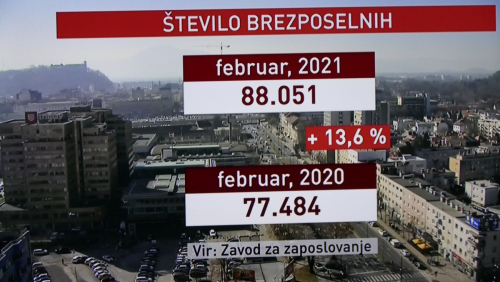
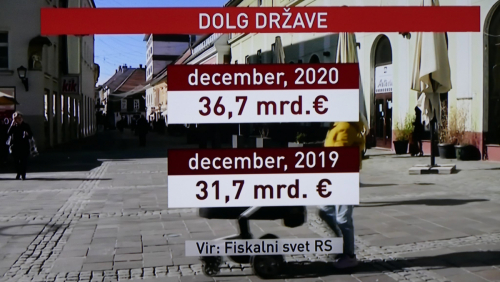
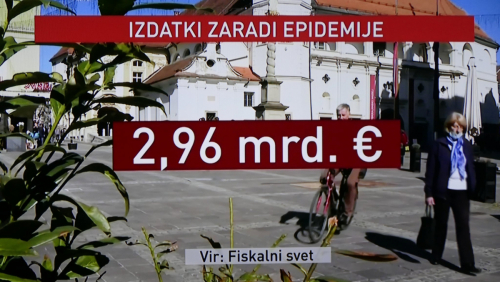
Črna plat epidemije: 468 ljudi si je želelo vzeti življenje
Več poskusov samomorov, polna otroška in mladostniška psihiatrija, skokovita rast družinskega nasilja, omejen dostop do psihiatra in daljše čakalne dobe na prvi pregled. Tudi to so negativne posledice epidemije.
*
Izredno skrb vzbujajoč podatek je, če (ne)dostopnost ponazorimo še na enem primeru, ki prihaja iz onkoloških vrst: med prvim valom je bilo precej manj odkritega raka – za 30 odstotkov manj kot v povprečju. Ta številka se je na srečo potem »popravila«, a v tem popravku ni nič spodbudnega.
Še ena konkretna informacija: vodja ortopedskega oddelka Splošne bolnišnice Dr. Franca Derganca Nova Gorica Danijel Bešič Loredan je konec lanskega leta razočaran sporočil, da je moral na svojem oddelku odpovedati operacije 200 ljudem in da jim ne zna povedati, kdaj bodo prišli na vrsto. Jasno mu je, da slovenski zdravstveni sistem še nikoli v zgodovini ni bil tako nedostopen, kot je v tem trenutku.
»Koliko bolnikov, ki nimajo covida, ne pride do zdravnika, koliko različnih diagnoz – ki morda res niso življenjsko ogrožajoče – se izpusti. Kaj to pomeni za leto 2021, za čakalne vrste, kaj za splošno zdravje ljudi,« so njegove besede. »To, da je danes slovenski zdravstveni sistem nedostopen bolj kot kdajkoli prej, se nam bo vrnilo kot bumerang. Smo na točki, ko bolniki ne pridejo do zdravnika, zdravljenja ni, to se je preselilo v neko virtualno okolje,« je še dejal v enem svojih zadnjih intervjujev za našo medijsko hišo.
https://novice.svet24.si/clanek/novice/slovenija/613c8c0db1bbe/slovenski-zdravstveni-sistem-je-zdaj-nedostopen-bolj-kot-kdajkoli-prej
*
https://www.thelancet.com/journals/lancet/article/PIIS0140-6736(21)02143-7/fulltext
*
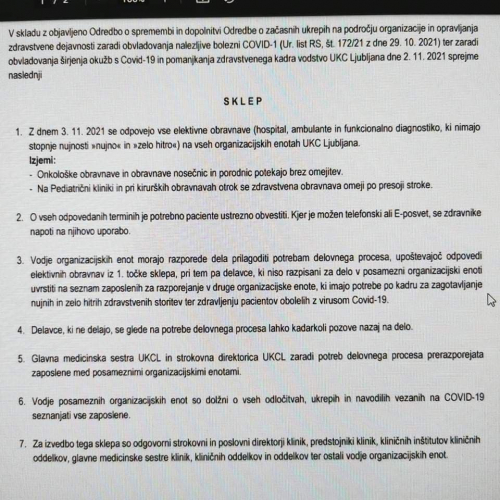
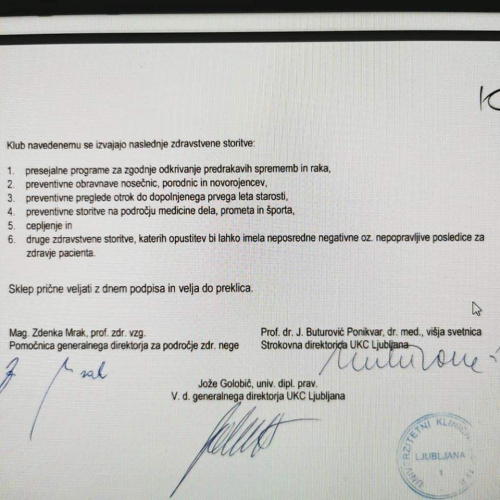
*
MORE THAN 400 STUDIES ON THE FAILURE OF COMPULSORY COVID INTERVENTIONS
*
Nov 06, 2020
